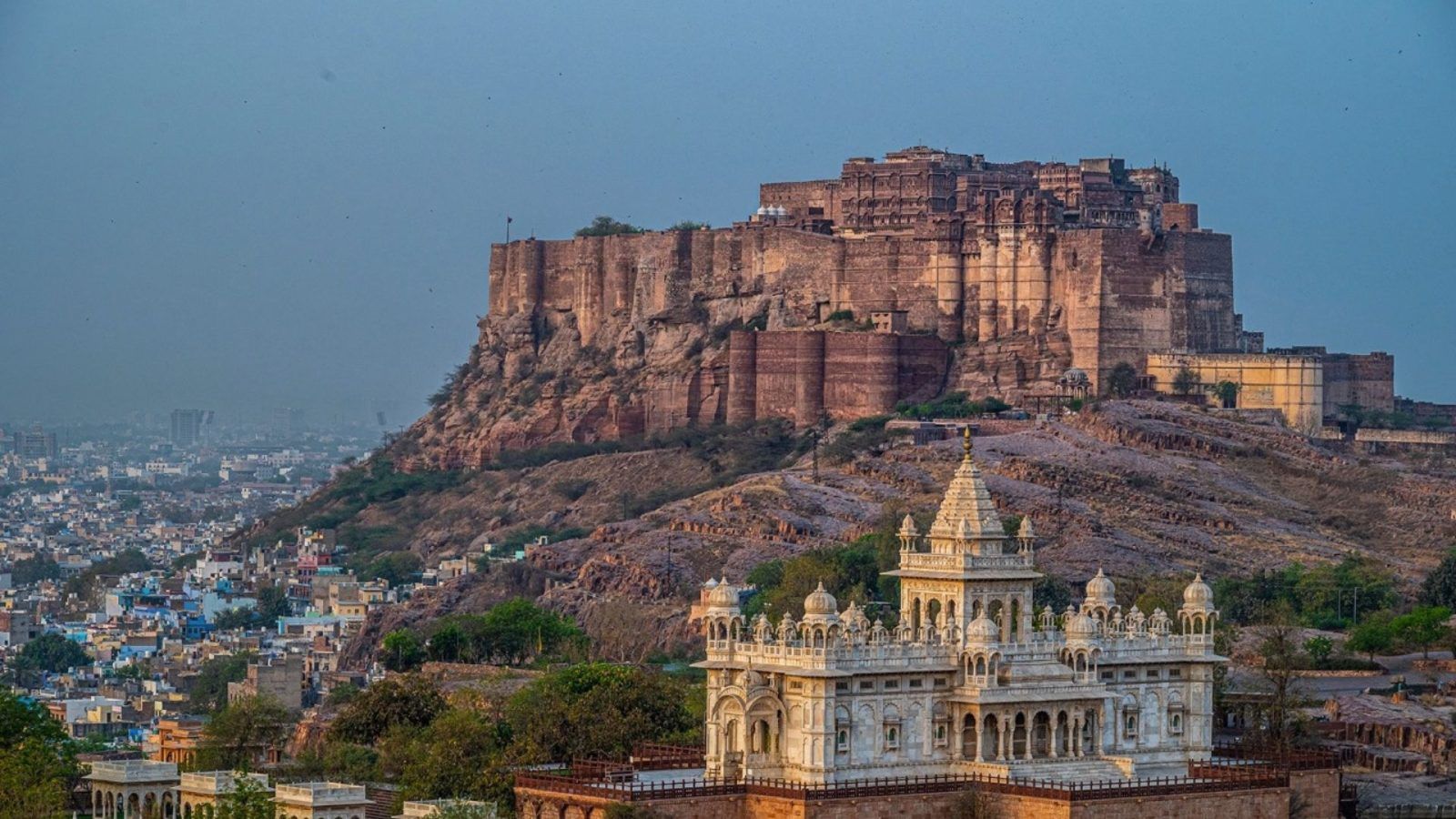
Jodhpur in Rajasthan is often overlooked compared to its more famous siblings, Jaipur and Jaisalmer. But its historically invincible fort and other must-visit places make the exotic blue city of Jodhpur an intriguing destination, with years of history waiting to be unpeeled.
Standing at the base of Mehrangarh Fort (Citadel of the Sun), I crane my neck awkwardly to study the magnificent edifice that crowns the rocky hill. The scale is astounding. It rises to a height of 400 feet with a 5-kilometre long battlement, which Rudyard Kipling ascribed to have been ‘built by Titans’. I’m gobbling up the remaining Dabeli from the little food stall while I debate its beginnings in the mid-15th century. When Rao Jodha moved the Marwar capital here from Mandore, did he know that he was laying the foundations for a stronghold of the Rathore imperials? And that 17 successive generations of Rathores would rule here over the next five centuries, expanding the structure and its legacy beyond its original limits.
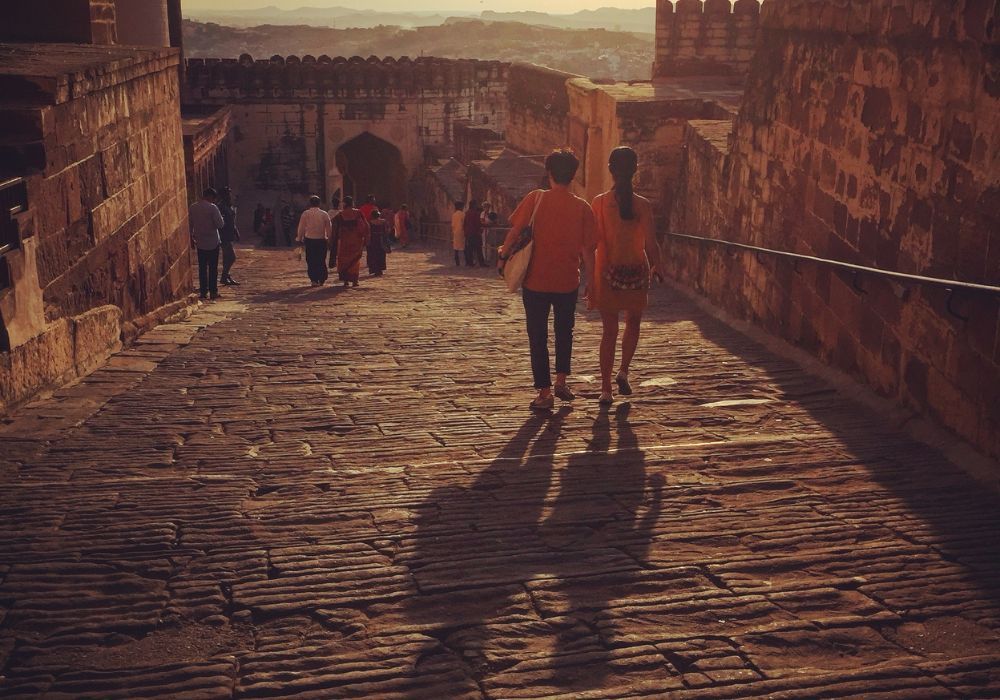
A steep cobbled pathway leads to one of the seven solid gates. I allow my imagination to run amok. Horse cavalry, decorated elephants, festive processions, and coronations were everyday affairs here once upon a time. We pass a bunch of foreign tourists witnessing a ceremonial turban-tying in the courtyard with deep intrigue. I follow the deft moves of the expert hands, folding and twisting the length of fabric into headgear that symbolises honour, dignity, and grace.
Also read | 10 Days In Rajasthan: Your Perfect Itinerary For Desert Delights, Palaces And Beyond
Inside the fort, we wander from room to room, poring over the faded palanquins and mirror-laden walls dulled with time. I am drawn to the unusual Art Nouveau-inspired keyhole staircase, a whimsical twist amidst Marwari grandeur. But the true highlight is the breathtaking panorama of blue houses stretching into the distance, their vibrant hues shimmering under the sun like a vast canvas of dreams. That’s where we need to go next. Hailing an autorickshaw, we get set to lose ourselves in the blue maze.
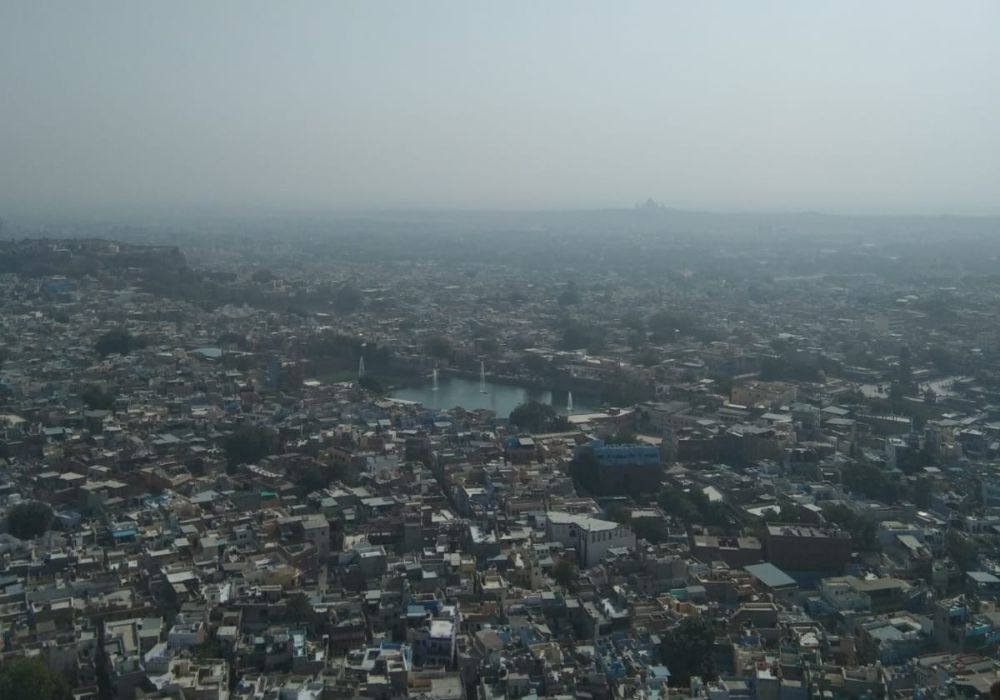
What’s the tale behind these houses adorned in natural indigo? Some locals suggest that the cool shade, enhanced with copper salt in the lime wash, not only adds beauty but also keeps interiors cooler and wards off pests. Others claim that this blue hue was once reserved for the affluent Brahmins of the area. The navigation begins. The vibrant palette of a hundred blues brings to mind a grittier version of Chefchaouen in Morocco. We dodge stray dogs, sidestep cows, and leap over ditches. Women sit on the porch of a small temple, heads covered in devotion, hands clapping to the rhythm of melodic kirtan. Where are we? It seems like a time warp. Away from the hustle of urbanity, these narrow alleyways are thick with the scent of home cooking and the memory of leisurely afternoons. But there’s much more to explore beyond the labyrinth of Brahmapuri.
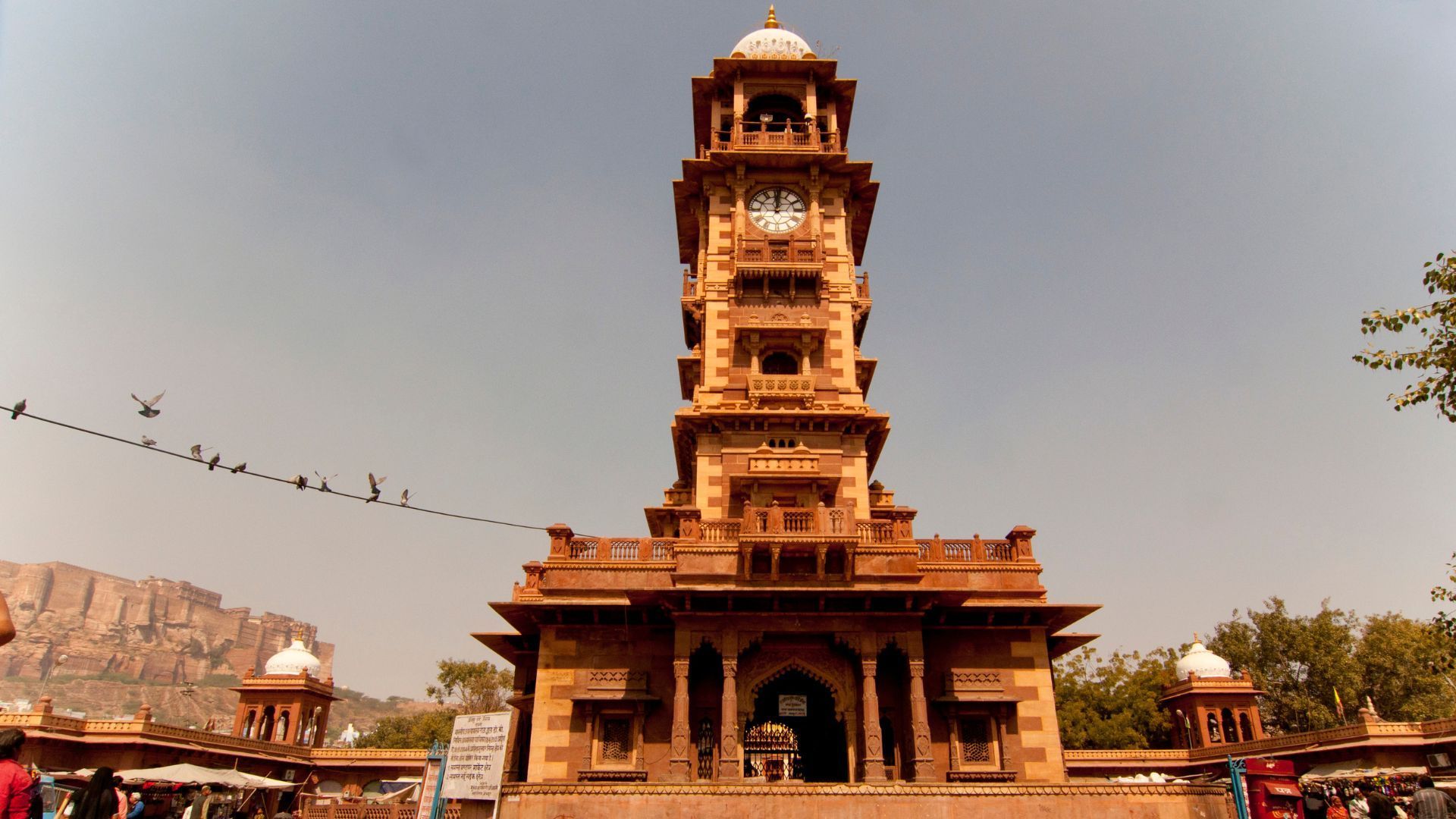
We head back to the 2-square kilometre walled city enclosed inside six pols (gates), named after the towns they face. The cobbled chowk (square) with the Clock Tower, surrounded by temples, mosques and schools is ensconced happily in chaos. Each bazaar has its rhythm: spices, textiles, jewellery, grains, or chillies. I unleash my inner design freak, picking up bandana sarees, embroidered mojris and silver earrings. Narrow lanes, smartly shaded to shield us from the desert sun, lead us deeper into the market. Along the way, I study the facades of havelis. They’re decked like brides, with ornate carvings, carved doorways and intricate jharokhas.
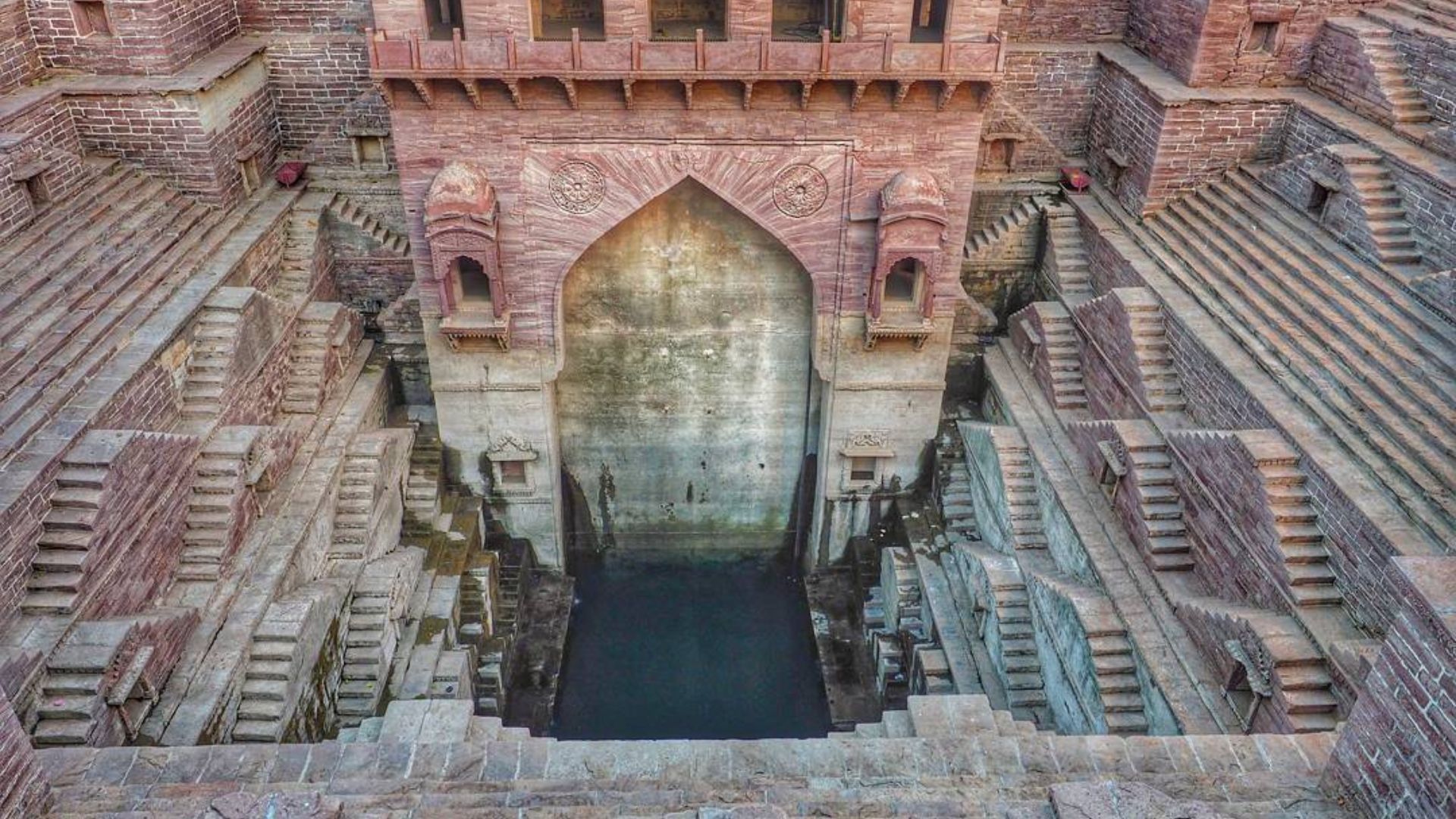
We’re on a quest to uncover Jodhpur’s hidden step-wells, once vital reservoirs to harvest and store water in the arid desert climate, now silent relics steeped in history. The showstopper is the 18th-century architectural marvel, Toorji ka Jhalra, 60 feet deep with 400 steps leading into a dark chasm. From a distance, it seems dizzying, but as I walk down, it becomes a welcoming space with delicate carvings, elaborate pavilions, and a staggering geometric pattern. With each level, I descend cautiously; the shadows grow deeper, the heat gives way to cool air, and a hush settles in. I can’t believe I’m so close to the clamour around. Suddenly, it’s all so clear. I’ve unlocked the secret to this forgotten world. These wells must have been lifelines for the city, offering respite and water to weary travellers and residents alike.
The next day, we venture to Mandore. The once-glorious capital is now a lesser-known site of grand, ornamental red sandstone cenotaphs, dedicated to the Marwar sovereigns. Memorials or temples, I debate, for they seem to serve both purposes. Richly carved domes, intricate motifs and arched pavilions whisper footnotes of ancient craftsmanship. I almost expect to see priests in traditional attire reciting prayers amidst chiming bells. The cool stone under my feet grounds me in this sacred space, filling my head with visions of bygone eras where royalty and religion intertwined. A street musician strums the strings of the Rawanhatta, his melodies transporting me to long-lost courts and regal figures dressed in vibrant silks. Something stirs in my heart. At this moment, I am not just a visitor but a part of the legacy that breathes through Mandore.
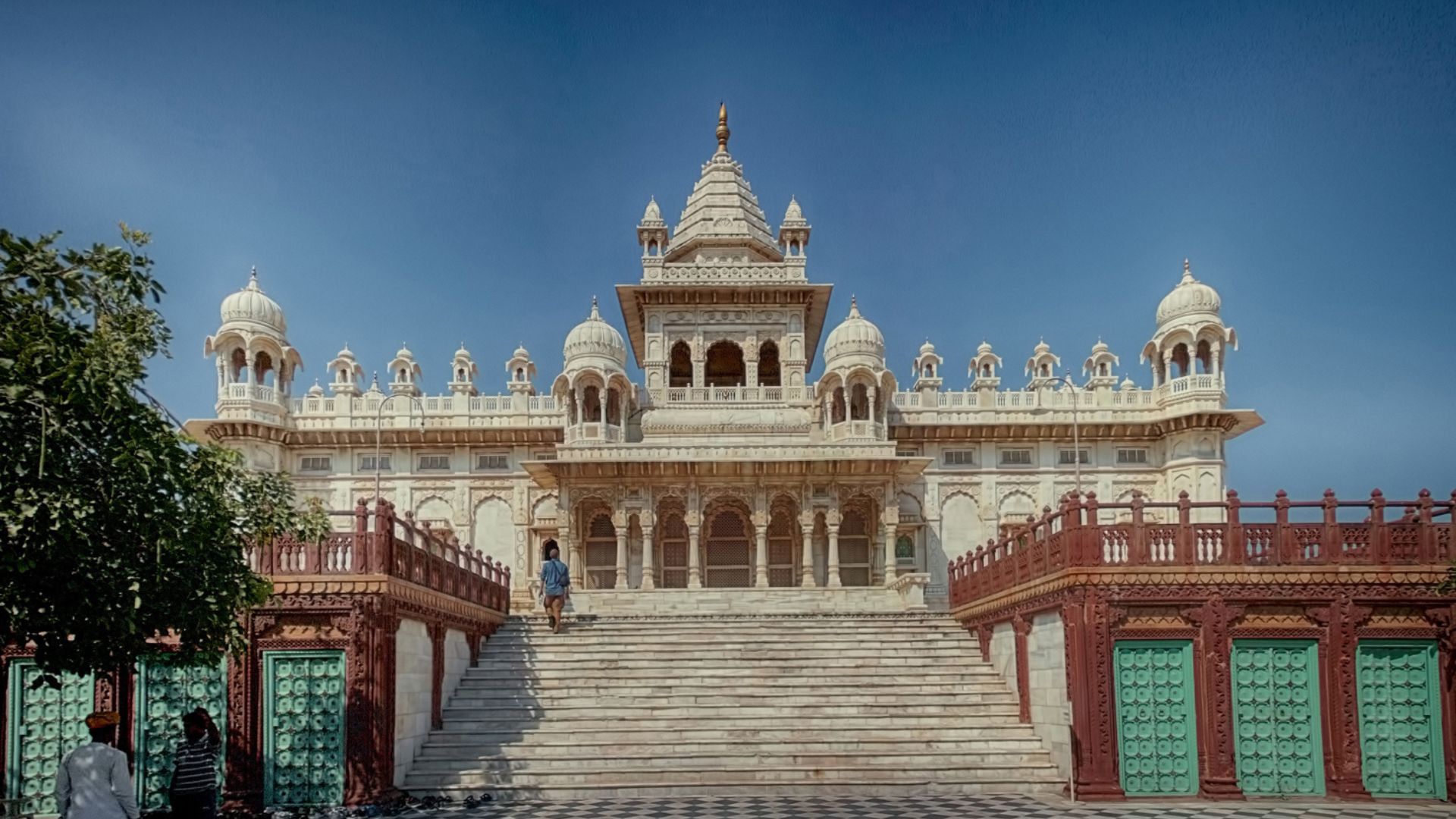
It’s a striking contrast of design sensibility at Jaswant Thada, the 19th-century burial ground of the Marwar rulers. The seamless amalgamation of Mughal and Hindu architectural elements clad in exquisite marble stunned me speechless. There are multi-tiered gardens, carved gazebos and lace-like jaali windows that play magically with light and shadows. It feels less like a tomb and more like a contemporary temple, a sanctuary of peace and reflection. I sit on the steps, thinking that the Marwar rulers may be long gone, but their spirit lives on, not just in Mandore and Jaswant Thada but in every corner of this city. It’s in bustling markets where artisans sell handicrafts, in fragrant kitchens where age-old recipes bubble and in the rhythmic beats of Rawanhatta music. In the heart of Marwar, history is not merely a record of the past; it is a living, breathing entity, enveloping travellers in its embrace for all times.
Places to visit in Jodhpur: Essential information
Best time to visit Jodhpur
The ideal time to visit Jodhpur is from October to March. During these months, the weather is pleasantly cool, with temperatures ranging from 10°C to 25°C, perfect for comfortably covering the best places to visit in Jodhpur. This season also coincides with several local festivals, so you’re keen to participate actively in Jodhpur’s rich culture and traditions.
Also read | Timing Is Everything: Discover The Best Time To Visit Rajasthan For The Ultimate Itinerary
Things to do in Jodhpur
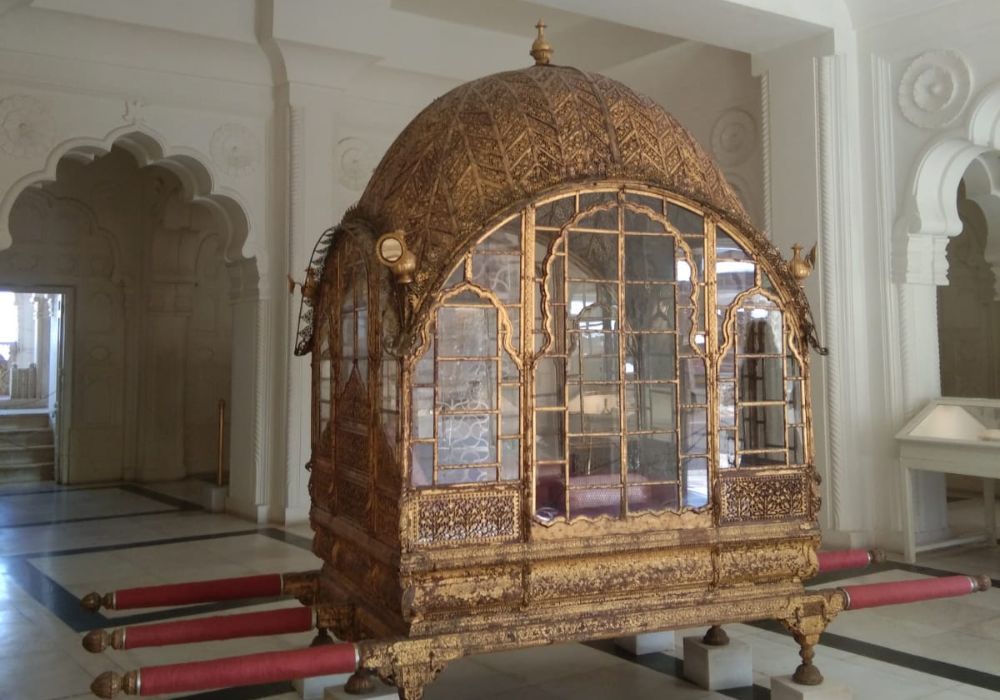
Start your adventure by exploring the majestic Mehrangarh Fort, which towers over the city. The museum houses royal artefacts, and you can learn about the fort’s fascinating history. Bazaars like Sardar Market are among the best places to visit in Jodhpur. Here, you can shop for textiles, handicrafts, and spices. You can also attend traditional dance performances or puppet shows.
Best places to visit in Jodhpur
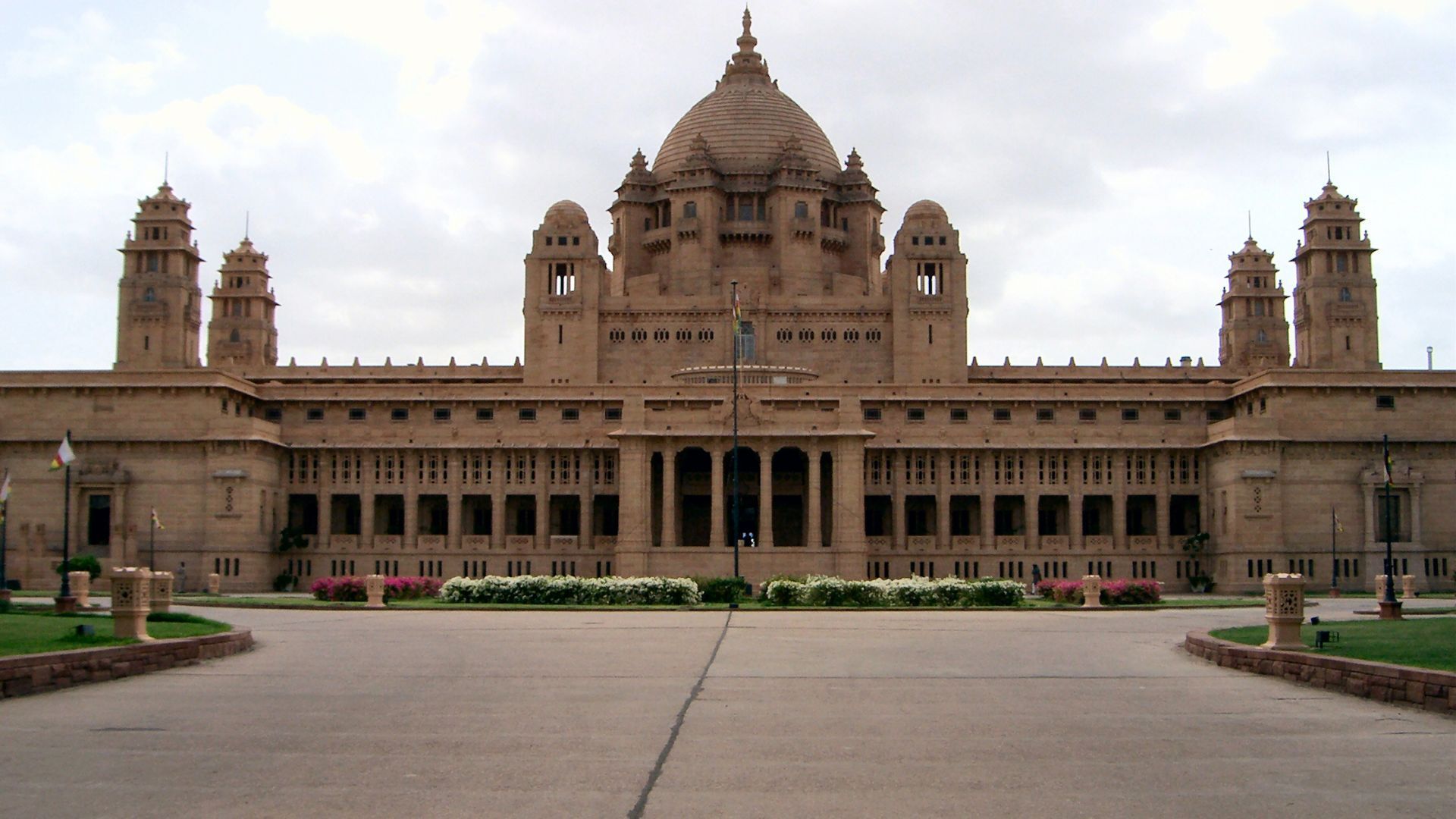
The Umaid Bhawan Palace, an architectural marvel, is a luxury hotel and a museum where you can delve into the royal family’s history. Jaswant Thada, a beautiful marble cenotaph, is another must-visit place in Jodhpur. It offers a peaceful retreat with intricate carvings and serene gardens. One of the best places to visit in Jodhpur is Brahmapuri, where iconic blue-painted houses create a picturesque backdrop for photography.
Best hotels in Jodhpur
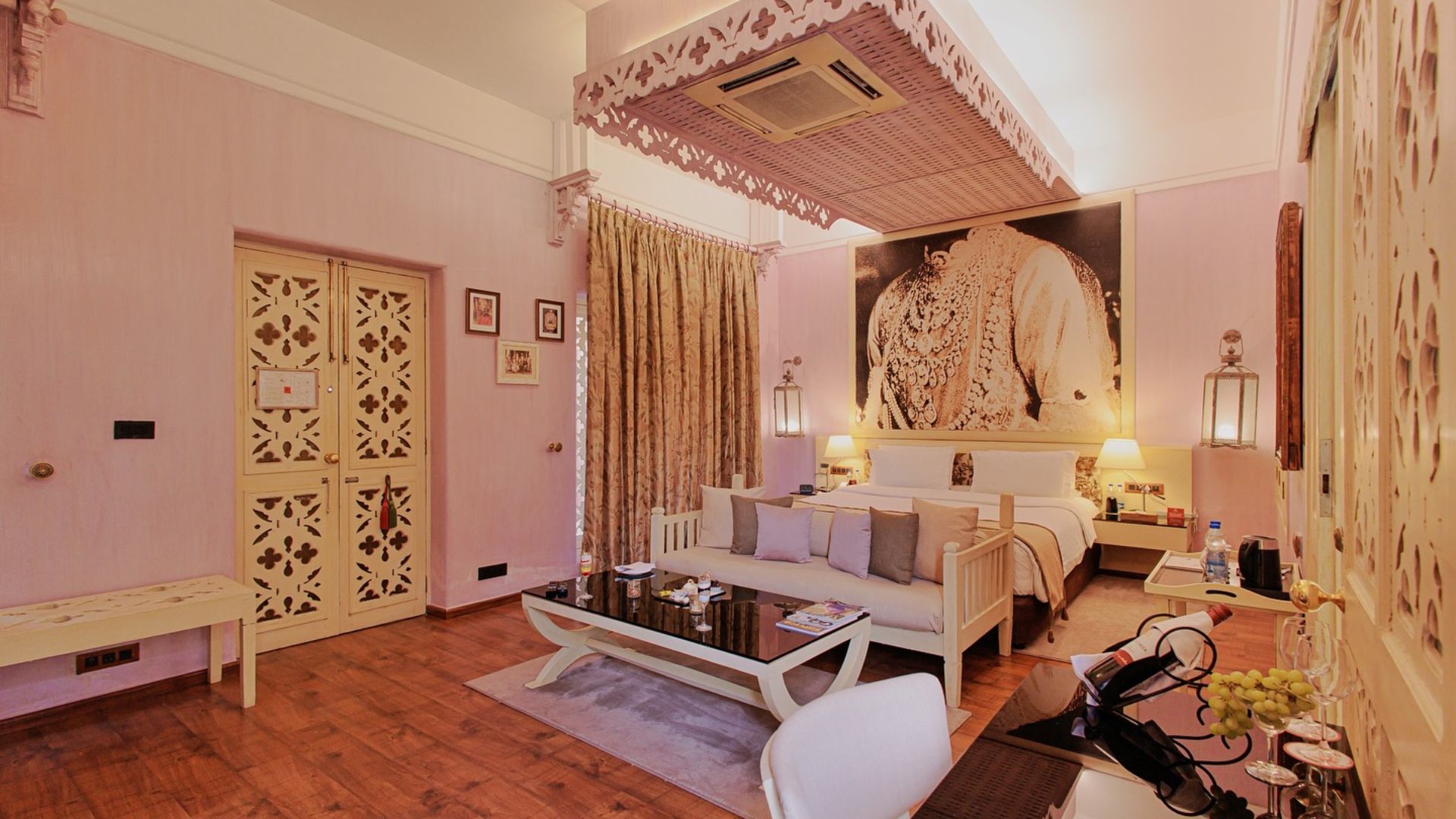
When it comes to accommodations, Jodhpur offers a range of options to suit various tastes and budgets. Raas Jodhpur and Umaid Bhawan Palace are two of the finest luxury hotels, while Hari Mahal and The Ajit Bhawan blend heritage charm and modern comforts.
Explore more with our guide to Rajasthan’s finest palace hotels.
Book your stay at The Ajit Bhawan via Booking.com
Book your stay at The Ajit Bhawan – A Palace Resort via Agoda.com
Best restaurants & places to eat in Jodhpur
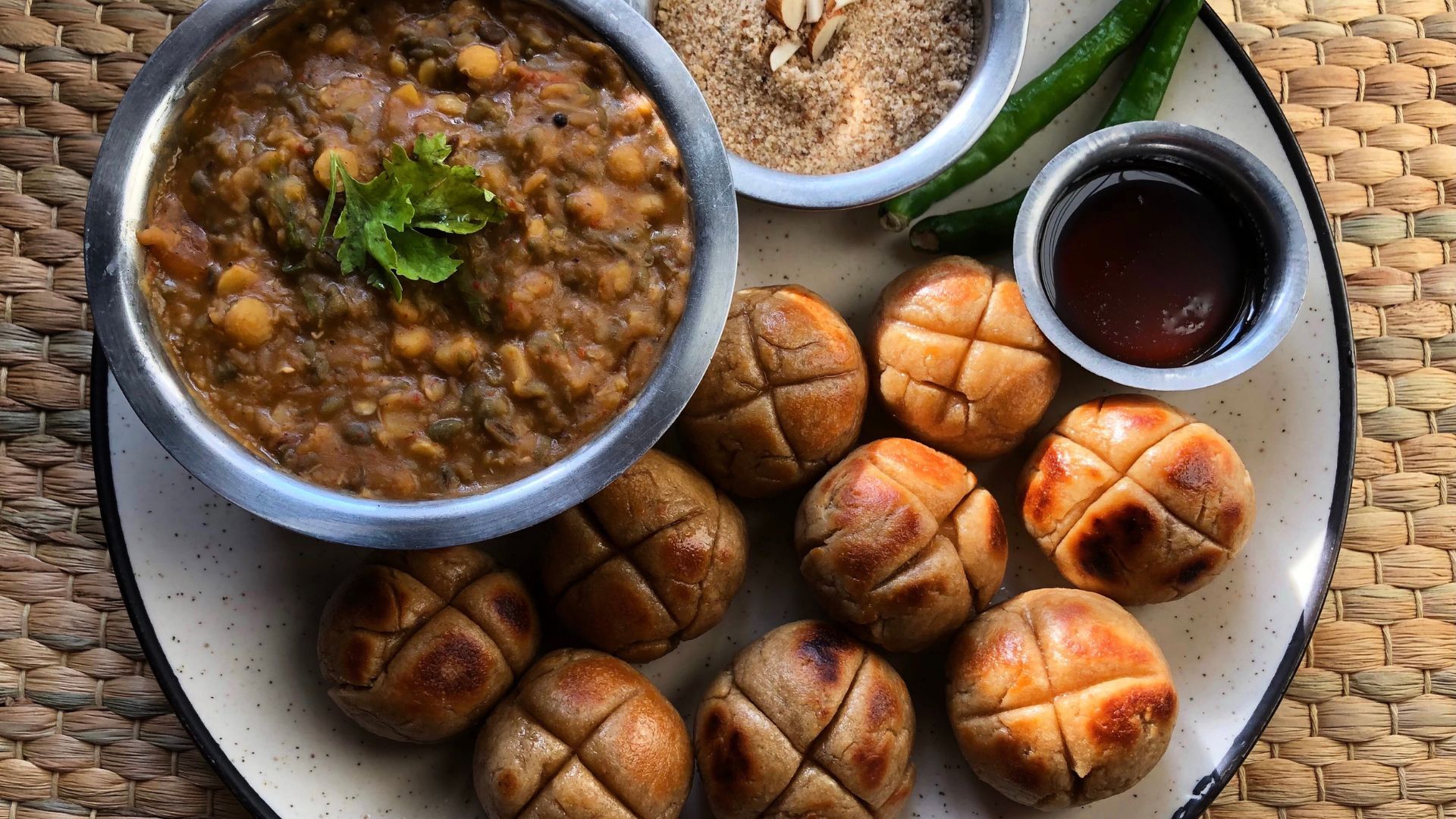
Food lovers will find plenty of places to delight their taste buds in Jodhpur. Try authentic Rajasthani dishes like Dal Bati Churma, a traditional meal featuring lentils, baked wheat balls, and sweet crumbled bread. Take advantage of street food options like Pyaaz Kachori and Lassi. Raas Jodhpur is one of the best places to visit in Jodhpur for dining with a view of the Mehrangarh Fort.
shop the best travel experiences here
(Feature Image Credit: Sanhitasinha, CC BY-SA 4.0, via Wikimedia Commons)
Related: Beyond Forts And Palaces: The Most Haunted Places In Rajasthan
Note:
The information in this article is accurate as of the date of publication.
We may earn an affiliate commission when you shop through links on our site.
FAQs (Frequently Asked Questions)
Key sites include Mehrangarh Fort, Jaswant Thada, and the clock tower area in the old town.
Nearby attractions include Osian, known for its temples, and Mandore, famous for its gardens and cenotaphs.
Activities range from fort tours and heritage walks to shopping in the local bazaars for handicrafts and textiles.
Visit the Rao Jodha Desert Rock Park and the vibrant markets where children can enjoy local sweets and crafts.
Participate in local festivals, explore traditional music and dance performances, and take part in cooking classes to learn Rajasthani cuisine.
Stay hydrated, wear comfortable shoes for exploring, and respect local customs and traditions.
Luxury options include Umaid Bhawan Palace, Taj Hari Mahal, and The Marugarh Resort, each offering unique experiences.
Discover the scenic beauty of the Thar Desert, visit the nearby Osian Sand Dunes, and explore the flora and fauna at Rao Jodha Desert Rock Park.

